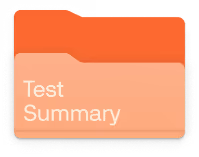
Key Benefits
- Check adrenal hormone precursor to cortisol; screens for congenital adrenal hyperplasia.
- Spot inherited adrenal enzyme issues; high levels suggest 21‑hydroxylase deficiency.
- Clarify causes of hirsutism, acne, or irregular periods from adrenal androgens.
- Flag late‑onset CAH versus PCOS when androgen excess blurs the picture.
- Guide treatment in known CAH; help adjust steroid dosing and prevent adrenal crises.
- Protect fertility; identify treatable adrenal causes of ovulation problems, miscarriage risk, and subfertility.
- Track trends reliably; use early‑morning, follicular‑phase draws and consistent lab methods.
- Best interpreted alongside ACTH testing, cortisol, androstenedione, and your symptoms.
What is 17-hydroxyprogesterone?
17-hydroxyprogesterone (17‑OHP) is a steroid intermediate made mainly in the adrenal cortex, with smaller contributions from the ovaries and testes. It is created when progesterone is modified at the 17th carbon by 17α‑hydroxylase (CYP17A1). From there, 17‑OHP sits at a branch point: it can be converted toward cortisol via 21‑hydroxylase (CYP21A2) to form 11‑deoxycortisol, or diverted toward androstenedione and other androgens through 17,20‑lyase activity. It is not a final hormone but a “stepping‑stone” in steroid synthesis.
Functionally, 17‑OHP acts as a precursor rather than a hormone with major direct effects. Its production is driven by pituitary ACTH (adrenocorticotropic hormone), so circulating levels mirror adrenal steroid‑making activity and the performance of key enzymes in the cortisol pathway. In practical terms, 17‑OHP is a window into how readily the adrenal gland can make cortisol and how much steroid flow is being diverted toward androgen production. It is a practical readout of adrenal steroid pathway dynamics.
Why is 17-hydroxyprogesterone important?
17‑hydroxyprogesterone (17‑OHP) is a pivotal steroid intermediate that links the adrenal “stress” pathway (cortisol and aldosterone) with the androgen and progesterone pathways. Because it sits at a branch point, its level reveals how well the adrenal cortex and, in women, the ovaries are converting precursors under ACTH and LH control. It is central in newborn screening for congenital adrenal hyperplasia (CAH) and in evaluating androgen‑related symptoms.
Values vary by age, time of day, and menstrual phase: newborns are higher and then fall; adults are lowest in the morning; women rise in the luteal phase and during pregnancy. In general, adults fall within a mid‑range appropriate for the sampling time.
When 17‑OHP is low, it usually reflects reduced adrenal or ovarian steroidogenesis or ACTH suppression (for example after glucocorticoids). Systemically, this can track with low cortisol physiology—fatigue, low blood pressure, dizziness, and salt craving—though many healthy prepubertal children naturally run low. In women, very low luteal‑phase levels may accompany low‑progesterone states, with short cycles or premenstrual spotting.
When 17‑OHP is high, it often signals a bottleneck at 21‑hydroxylase. In classic CAH, levels are markedly elevated, cortisol and often aldosterone are deficient, and infants risk salt‑wasting crises; girls may have virilization, and boys may show early growth and pubarche. Milder elevations occur in nonclassic CAH, with acne, hirsutism, irregular periods, and subfertility; stress and rare adrenal/ovarian tumors can also raise it.
Big picture: 17‑OHP is a systems biomarker tying the HPA axis to reproductive hormones. Persistently abnormal values point to enzyme defects, chronic ACTH drive, or androgen excess, with implications for growth, fertility, bone health, and cardiometabolic risk.
What Insights Will I Get?
What 17-hydroxyprogesterone tells you. 17-hydroxyprogesterone (17‑OHP) is an adrenal and gonadal steroid intermediate that sits upstream of cortisol and, to a lesser extent, androgens. It is a readout of adrenal enzyme function—especially 21‑hydroxylase—and ACTH drive. Because cortisol influences energy balance, blood pressure, immune tone, and stress resilience, 17‑OHP helps map how well the stress hormone pathway is flowing and whether androgenic byproducts may be accumulating.
Low values usually reflect low adrenal output or efficient conversion downstream to cortisol. They are common in children and in the early follicular phase of the menstrual cycle. Suppressed ACTH (for example, after glucocorticoids) and adrenal insufficiency can both produce low 17‑OHP, which aligns with fatigue, low blood pressure tendency, and reduced stress tolerance. Rarely, 17‑hydroxylase deficiency causes very low 17‑OHP with low sex steroids and hypertension.
Being in range suggests balanced adrenal steroidogenesis with no backlog upstream of 21‑hydroxylase. In adults, appropriate morning values within the age‑ and sex‑specific, and for women the cycle phase–specific, interval indicate a stable HPA axis and low likelihood of congenital adrenal hyperplasia (CAH). There is no single “best” spot in the range; physiological context determines the expected level.
High values usually reflect a bottleneck at 21‑hydroxylase, leading to accumulation of 17‑OHP and spillover into androgens. This is typical of CAH (classic or nonclassic). Elevations can also appear with high ACTH states (stress, illness), in the luteal phase, in pregnancy, and sometimes in PCOS or adrenal/ovarian tumors. System effects include acne, hirsutism, irregular cycles, and subfertility; in infants, very high levels flag CAH and possible salt‑wasting risk.
Notes: 17‑OHP is pulsatile, highest in the morning, and varies by menstrual phase and pregnancy. Prematurity and acute illness raise neonatal values. Immunoassays can overestimate; LC‑MS/MS is more specific. ACTH stimulation testing refines borderline results.






.avif)



.svg)





.svg)


.svg)


.svg)

.avif)
.svg)










.avif)
.avif)
.avif)


.avif)
.png)


